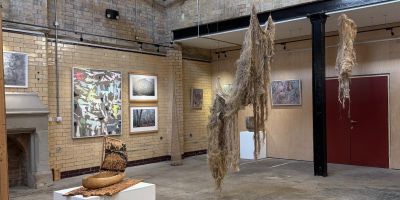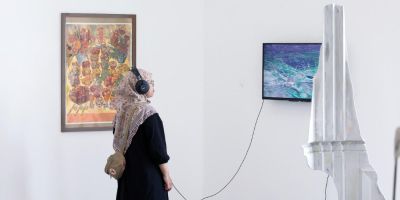Applications are invited for a fully funded PhD studentship in collaboration with The Bowes Museum and The National Gallery
Applications are invited for a fully funded PhD studentship in collaboration with The Bowes Museum and The National Gallery
A Great Commerce in Curious Paintings: the role and practices of art dealers and agents in the reception and re-evaluation of pre-1500 European paintings in Britain 1800-1865
The School of Fine Art, History of Art & Cultural Studies at the University of Leeds, The Bowes Museum and The National Gallery are pleased to announce a funded studentship for doctoral research, awarded under the AHRC’s Collaborative Doctoral Partnership Scheme.
The acquisition of pre-1500 paintings of the Italian, German and Netherlandish Schools was of limited interest to collectors in Britain during the first decades of the nineteenth century. Such art, often categorized as ‘curiosities’ and known at the time as ‘Primitives’ or ‘Ancient Masters’, was collected by a few pioneering individuals but during the second quarter of the 19th century tastes had begun to shift and by the 1860s such paintings were also appearing with increasing frequency in public art collections in Britain.
Such a shift in taste is illustrated by the collecting activities of John Bowes (1811-1885), one of the founders of the Bowes Museum, who in 1840 acquired of a number of ‘Ancient Master’ paintings from the auction sale of the Duke of Lucca’s collection. In the same period the acquisition policy at the National Gallery was paying increasing attention to ‘Ancient Masters’. This places both The Bowes Museum and the National Gallery at the nexus of these significant shifts.
To date, the histories of art collections have concentrated on the role of collectors and institutional histories in the expanding taste for art collecting in the early 19th century and consequently comparatively little is known about the art dealers and agents who facilitated the increasing desire for ‘Ancient Masters’. This studentship offers the potential to investigate the collecting activities of John Bowes and the developments at the National Gallery as two interconnected case studies, set against the developing art market for ‘Primitives’, in the period.
The research aims to shed new light on the mechanisms by which collectors and institutions built up their collections of early art. The focus on the Bowes Museum and the National Gallery could be further contextualised through comparative studies of other collections in the period which also amassed early art through art dealers and agents. The research will contribute significantly towards the understanding of and potential interpretation of the extensive collections of early paintings at both the Bowes and National Gallery.
The project is flexible enough to allow a student to develop their own ideas with this broad framework, but some key research questions could be:
What were the criteria for the inclusion of ‘Ancient Master’ paintings in collections in the opening decades of the 19th century? How did these criteria shift by the 1860s?
What role did the structures, rhythms and dynamics of the art market play in the increasing interest in ‘Ancient Master’ paintings?
How were collections of ‘Ancient Master’ paintings introduced and circulated in the art market? How did art dealers and agents respond to or stimulate demand?
Who were the key art dealers in ‘Ancient Masters’ in the period? What constituted their expertise?
What was the relationship between evolving notions of connoisseurship and art market structures?
What were the relationships between the collecting activities of John Bowes and the developments of the collections at the National Gallery?
How influential were art dealers in the assembly of the collections of John Bowes and at the National Gallery?
It is envisaged that the research will underpin new museum interpretations on the history of the collections and individual paintings.
This studentship will be supervised by Dr Mark Westgarth, University of Leeds, Dr Howard Coutts at The Bowes Museum and Dr Susanna Avery-Quash at the National Gallery. This full time studentship is funded for 3.5 years and will begin 1 October 2018.




